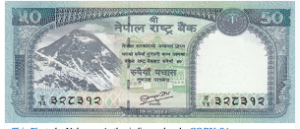Nepali
Nepali Numbers & Classifiers Lesson
Nepali Numbers and Classifiers
It’s time to learn some numbers in Nepali and how to use them when counting!
Here are the numbers 0-10. Then, the numbers 20, 30, etc. in increments of ten up to 100 and 1000. These numbers are helpful to know initially because the Nepali rupee has notes of 5, 10, 20, 50, 100, 500, and 1000.
| Number | Devanagari Number | Devanagari Spelling | Roman Spelling | |
| 0 | ० | सुन्ना | sunna | |
| 1 | १ | एक | ek | |
| 2 | २ | दुई | dui | |
| 3 | ३ | तीन | tin | |
| 4 | ४ | चार | chaar | |
| 5 |
|
पाँच | paanch* | |
| 6 |
|
छ | chha | |
| 7 | ७ | सात | saat | |
| 8 |
|
आठ | aaTh | |
| 9 |
|
नौ | nau | |
| 10 | १० | दश | das | |
| 20 | २० | बिस | bis | |
| 30 | ३० | तिस | tis | |
| 40 | ४० | चालिस | chaalis | |
| 50 | ५० | पचास | pachaas | |
| 60 | ६० | साठी | saaThi | |
| 70 | ७० | सत्तरी | sattari | |
| 80 | ८० | असी | asi | |
| 90 | ९० | नब्बे | nabbe | |
| 100 | १०० | सय | saya | |
| 1000 | १,००० | हजार | hajaar |
*The “n” is a nasal sound. So, the “n” should not be pronounced but should emulate a nasal sound similar to “paãch.”
Now, it’s time to count!
In English, if someone handed us four books to count we would say:
“There are four books.”
However, in Nepali, a classifier must follow the numbers when counting. There are two forms of classifiers: one is used for counting people, the other is used to count all other things, including animals.
People
जना (janaa)
1 person एक जना मान्छे ek janaa maanchhe
40 people चालिस जना chaalis janaa
You can use the term person/people following janaa or choose to omit it. Since janaa is only used for people, it is implied and is not necessary to include the word person/people.
There are fifty people.
पचास जना छन्।
Pachaas janaa chhan.
Things/Animals
वटा (waTaa)
For the first three numbers, वटा (waTaa) combines with the number of items and takes on a different form.
1 एउटा (ek + waTaa = euTaa)
2 दुइटा (dui + waTaa = duiTaa)
3 तिन्टा (tin+ euTaa = tinTaa)
1 book एउटा किताब euTa kitab
2 cats दुइटा बिरालो duiTa biraalo
3 homes तिन्टाघर tinTaa ghar
The rest of the numbers take on the regular form.
7 oranges सातवटा सुन्तला saat waTa suntalaa
1000 birds हजारवटा चरा hajaar waTaa charaa
Exceptions
There are exceptions. These classifiers are not used when telling time or dealing with money. For example, you can just say तिन दिन (tin din) for “three days,” or सय रुपैया (saya rupaiyaa) for “one hundred rupees.”
Let’s practice below!
PRACTICE

__________________________ नाशपाती (naaspaati)

_______________________ (try writing rupaiyaa!)

________________ (try writing maanchhe!)
Photos are from the Bing search engine on Microsoft Office Word.

